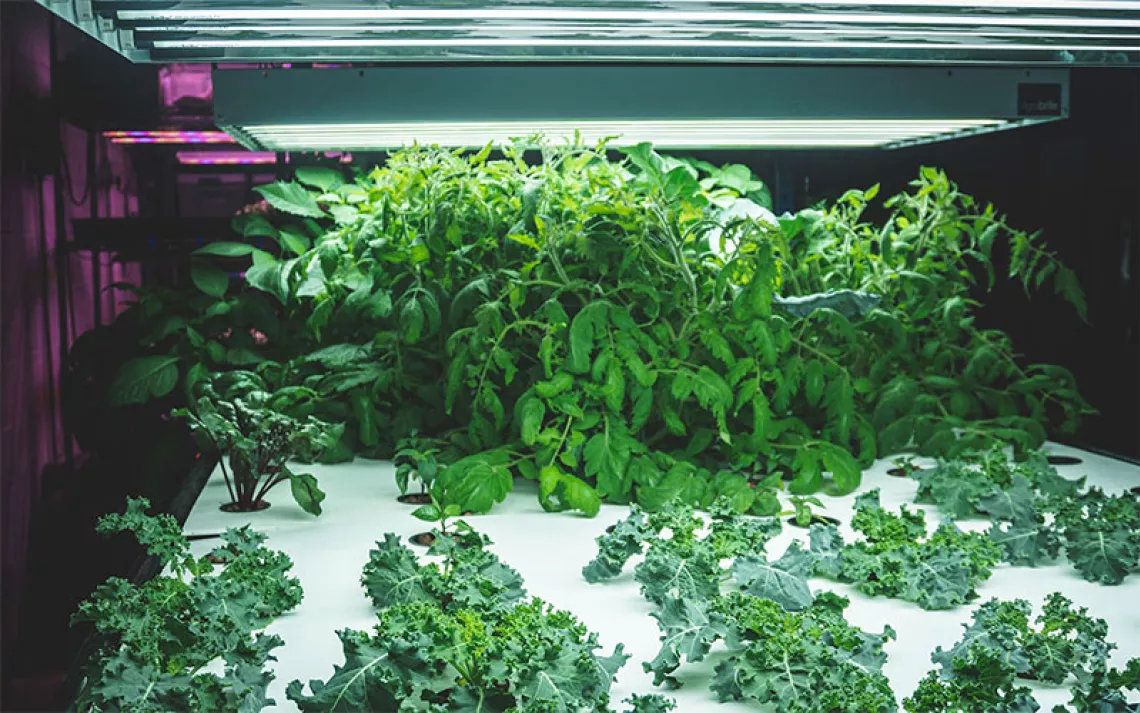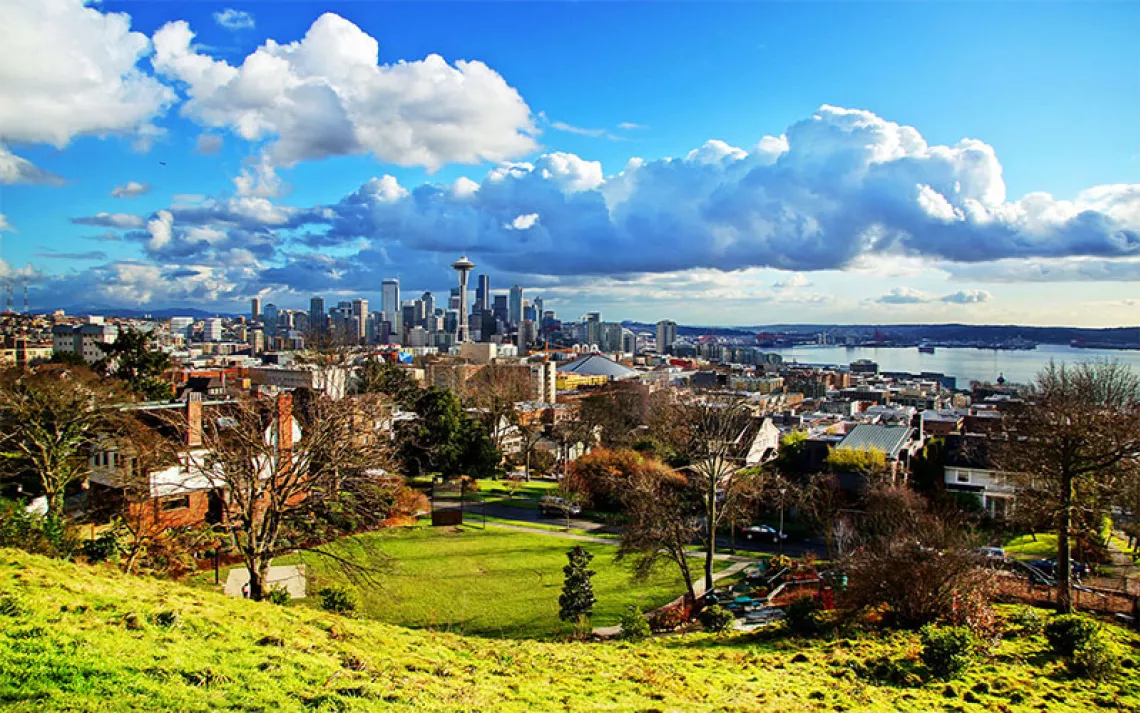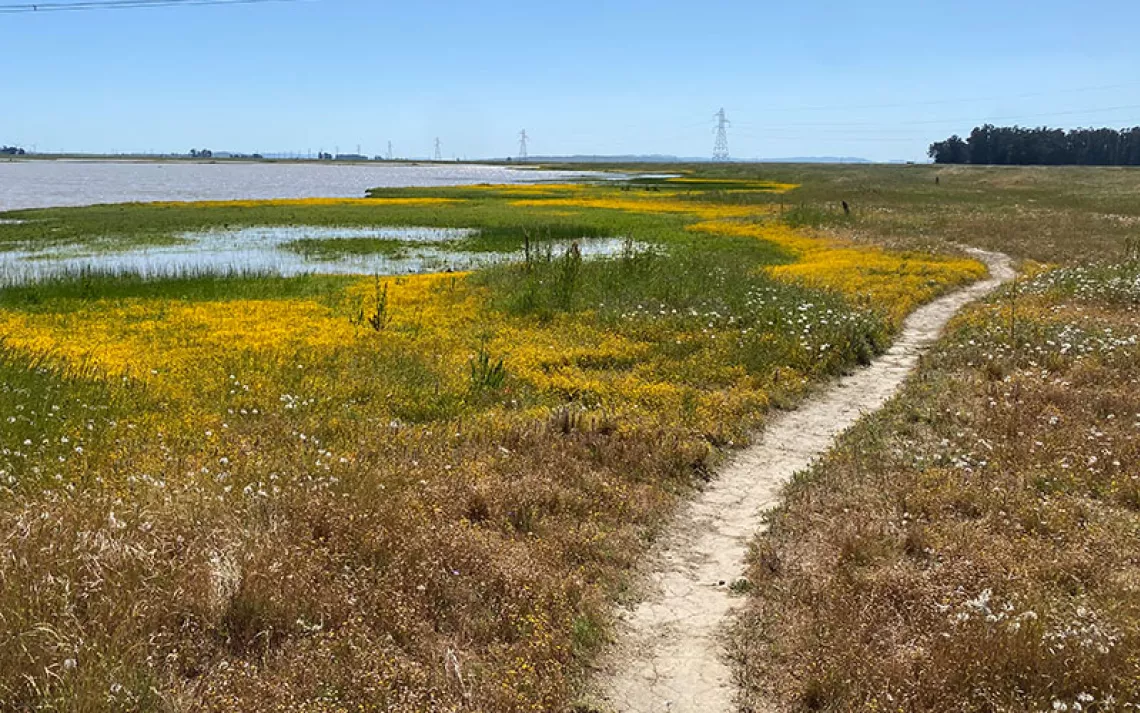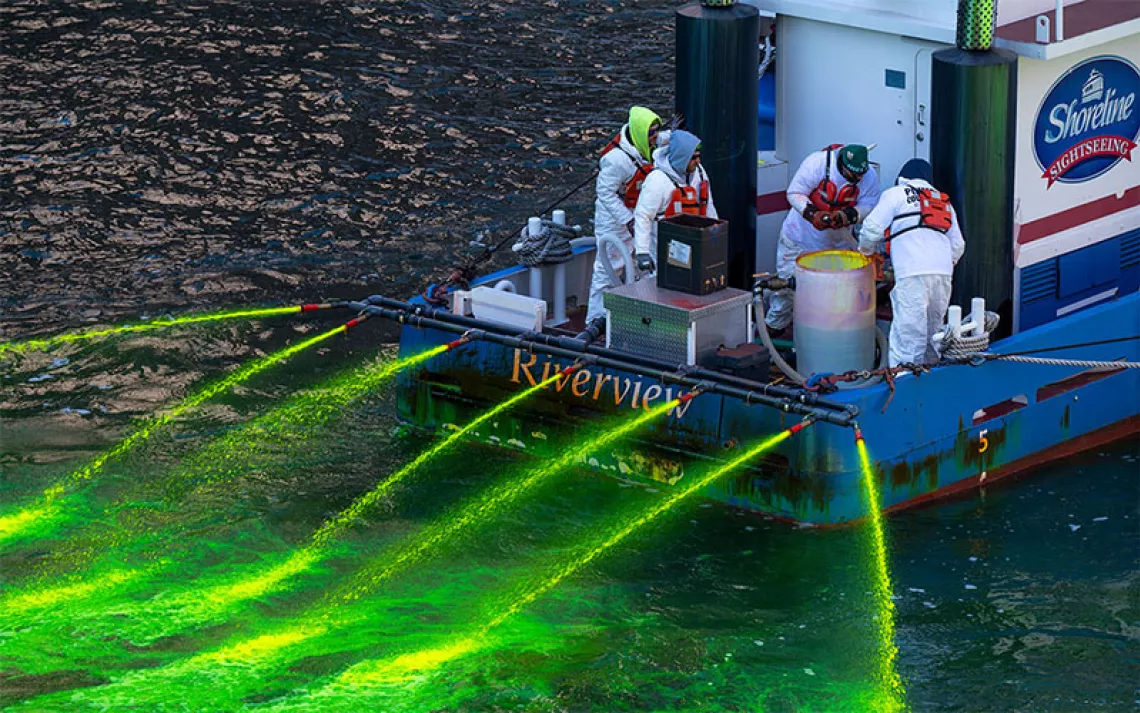Call of the (Urban) Wild
Researchers track urban coyotes to improve human and wild-canid coexistence

Photos courtesy of Jaymi Heimbuch/Urban Coyote Initiative
Coyotes in urban spaces have become the new normal. There is now a large, and growing, population of coyotes in San Francisco. Residents in Los Angeles, Phoenix, and Denver—among many other western cities—have long lived alongside coyotes. In recent decades, coyotes have even moved into urban hubs such as Chicago and New York City.
But what do we really know about urban coyotes’ “normal” behavior? Surprisingly little. So researchers are busy trying to determine how, exactly, coyotes utilize city spaces and what factors cause a coyote to become a “nuisance animal.” There’s just one hitch: Coyotes are so clever and so adaptable that they keep changing the game as they figure out their strategies for living the city life.
One expert on the cutting edge of coyote research is Dr. David Drake with the University of Wisconsin-Madison Urban Canid Project. UWUCP is shedding a light on many aspects of coyote behavior, and those findings, in turn, are illuminating how to create smarter coexistence strategies between humans and wild coyotes.
By collaring and tracking the city’s wild canids, Drake and his team are revealing a wealth of information about where coyotes prefer to live, their travel patterns, and how they share space with another common urban carnivore, the red fox.
Each winter, the team begins their collaring work. Thanks to the snow, it is a much easier time of year to see where their potential study subjects are hanging out. In January 2017, I had the chance to shadow Drake and his team during their field research.


It’s about 15 degrees Fahrenheit as we exit the truck, and the sky is a pale winter gray despite the sun trying hard to shine through the clouds. Our small group is made up of Dr. Drake, graduate student Marcus Mueller, and several veterinary students. We walk a trail from the parking lot into an empty field near the university’s arboretum. As we get closer to one of the team’s nonlethal traps, we all hang back as Marcus keeps moving quietly forward.
He stops, peering through waist-high grass stalks and then gives us a nod. There is a coyote in the cable restraint he and Drake set the night before. This coyote is about to be a participant in a study that tracks the movement of Madison’s urban coyotes.
After anesthetizing the young female, Mueller sets her on a tarp and wraps her in blankets to ensure her body stays warm after the drugs takes effect and her metabolism slows down. Then, we all approach and get to work.
The coyote is weighed and gets a radio collar carefully secured around her neck. The veterinary students take blood samples that will be held in storage until there is funding for analysis for health and genetics at a later point in time.
As the study continues, more and more questions are raised, including how the area’s wild canids are related, how and where they disperse to, what diseases they have been exposed to, and more. The team collects what data they can now in preparation for future research funding.
Along with coyotes, the team is catching and collaring red foxes that live in Madison. When the study launched, its primary goal was to discover how foxes and coyotes share the urban landscape both spatially and temporally. Coyotes and foxes are considered natural competitors, and wildlife biologists have long assumed that if there are coyotes around, there will not be red foxes. In the urban landscape, however, it turns out this assumption is false.
Marcus Mueller recently published his master's research in PLOS. His findings show that coyotes and foxes are active at the same times of day, but for the most part chose to use different types of habitat. Foxes tend to be in areas of higher human activity while coyotes prefer to stick to the margins, hanging out in areas with as little human activity as possible. This isn’t always the case, though.
“In our study area, coyotes within the largest natural area (UW Arboretum) rarely ventured into surrounding developed areas, whereas coyotes near smaller natural areas (Owen Park) frequently used adjacent neighborhoods,” Mueller wrote. “The size of natural areas may influence resource availability and therefore affect the way wildlife uses these areas.”
UWUCP is also interested in exploring how coyotes behave in city habitats and what this means for developing better strategies for coexistence between humans and coyotes. Social media, it turns out, is one of the most critical components.
The UW team has embraced the press and social media as a way to engage the public about its work, including answering questions about why and how they’re collaring coyotes. That connection has sparked successes that could be modeled elsewhere.
For instance, in 2016 UWUCP began receiving reports of daytime sightings of one of its collared coyotes. The coyote wasn’t running away from cars or people, which means it may have started losing its healthy fear of humans. So the team posted an alert on UWUCP’s Facebook page. The post gave a heads up to the public that this coyote seemed to be getting habituated. It also made a call to action, requesting residents haze the coyote when they saw it, and to remove attractants like pet food that might be drawing the coyote into the locations recorded by the radio collar.
Within three days, the post reached 8,000 people, and UWUCP stopped receiving reports of the coyote.
“That's just an anecdote, [showing] that what we did worked,” Drake tells me. “But clearly we think reaching 8,000 people is a good thing, and we pushed good information out to 8,000 people that we wouldn't have otherwise. And, the animal wasn't seen anymore or people weren't reporting it anymore. We were able to affect management in real time, and that was a fun thing to explore.”
“We definitely think a Facebook page or social media is the way to go,” Mueller adds. “That's how so many people communicate with each other, and you can get information out in real time for the most part. It's an opportunity for us to get people hooked, and once we have them hooked we can give them information and knowledge about what's going on and try to increase tolerance for these animals. If [people] come across these animals, they know what to do to keep themselves safe, to keep the animals safe, to keep their pets safe.”
Facebook is one platform, as is Twitter and more localized message board platforms such as Nextdoor. The team also utilizes iNaturalist, hosting a page for people to report sightings of foxes and coyotes.
“That helps us understand where these animals are on the landscape, if there are animals out there that we don't know about, and we look at how well our radio collar information overlaps with that iNaturalist data,” Mueller says.
The more the team learns about how the animals utilize the landscape, the more of a story there is to tell residents and get them engaged and excited about the wildlife with whom they share the city, and the more able they are to assuage fears and proactively avoid conflicts, from coyote predation on pet cats to fox predation on backyard chickens. Every collared coyote and fox represents an information set that will ultimately benefit the entire population living within Madison’s city lines and, perhaps, in cities across the country.
Among the questions the team continues to explore is where and when certain types of coyote-hazing activity by humans is effective; how often coyotes and foxes come into contact with domestic dogs; and coyote density from a rural to urban gradient, as part of understanding how coyotes disperse.
It is only a matter of time and determined watchfulness from researchers before we have unraveled the mystery of urban coyotes and craft an effective toolset for coexisting with our wild neighbors.
 The Magazine of The Sierra Club
The Magazine of The Sierra Club



